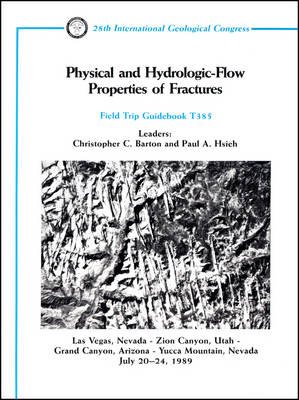Field Trip Guidebooks
1 total work
Physical and Hydrologic-flow Properties of Fractures
by Christopher C Barton and Paul A Hsieh
Published by the American Geophysical Union as part of the Field Trip Guidebooks Series, Volume 385.
Fractures are one of the most abundant structures in geology and are found in almost all rocks and soils at or near the Earth's surface. They are found over a wide range of length scales, from micro-fractures within mineral grams (micro-meters) to oceanic-intraplate fractures as much as 5000 km in length. The important role of fractures in fluid transport in the crust has long been recognized by geologists who have studied dikes (fracture conduits for flow of igneous rocks) and mineral veins fracture conduits for precipitation from aqueous Fluids). In studying these paleo-flow systems, little attention has been given to quantification of the flow properties of the system. Until two decades ago, hydrologists (Long, 1983) and petroleum-reservoir engineers (Nelson, 1985) studying fluid flow in rock had recognized the role of fractures only qualitatively. Quantitatively, the mathematics of fracture flow had been considered intractable while the mathematics of porous-media flow through the rock matrix had been developed and refined for almost one hundred ears. Direct observation of the flow properties of rock at field scales demonstrated the inadequacy of the porous media models beyond the scale of laboratory samples. The hydraulic conductivity of fractured bulk rock has been measured to be as much as 8 orders of magnitude greater than matrix hydraulic conductivity measured in laboratory samples of the same intact rock. Clearly, fractures are primary conduits for fluid flow in rock at time scales of economic and practical interest. Quantitative understanding of the physics of flow in individual fractures and fracture networks has become an important research topic with direct applications to contemporary and paleo flow systems.
